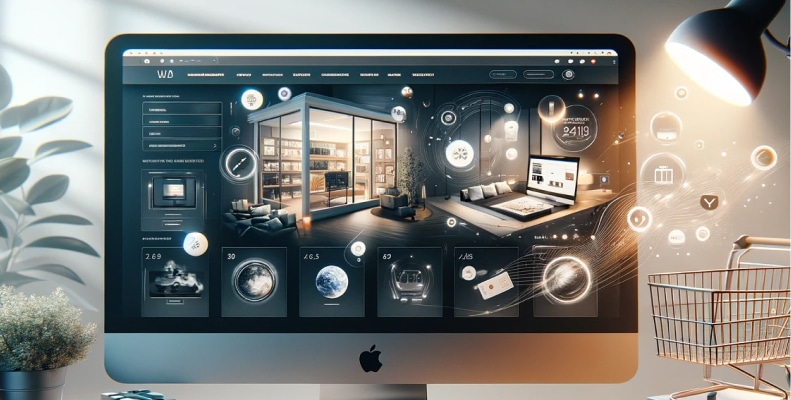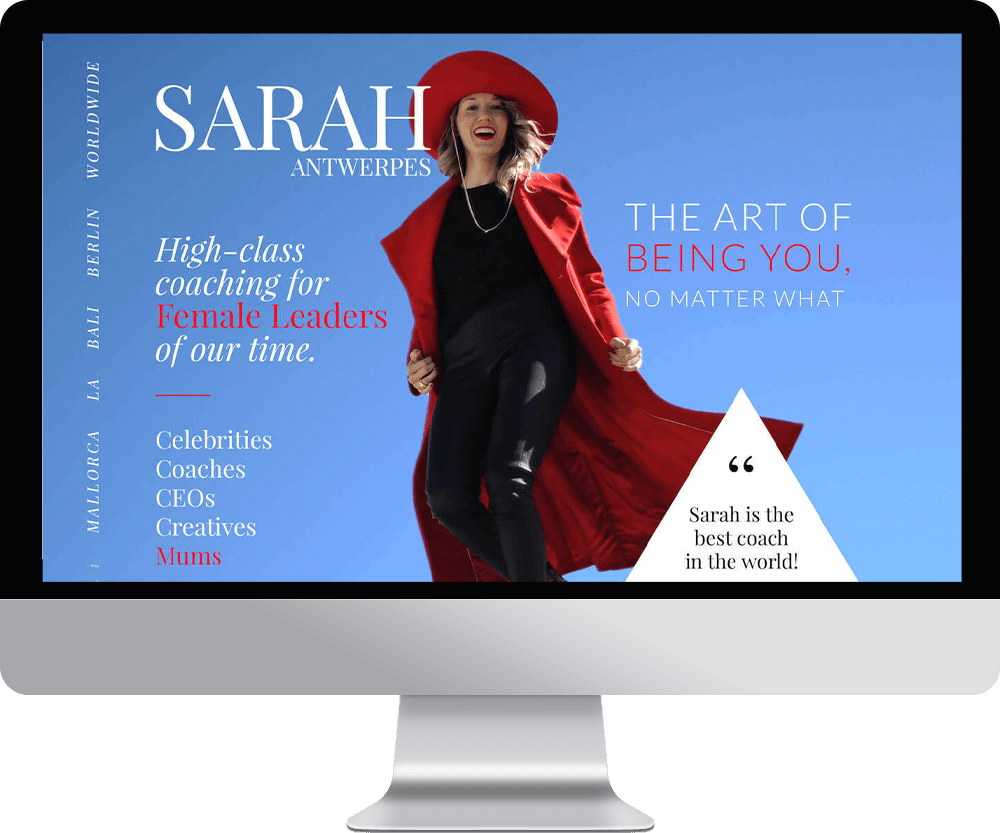Standing out is about more than just offering top-notch products or services. It’s about crafting an online experience that resonates, engages, and converts. This is where the latest ecommerce design trends comes into play. With the right approach, your online store can transform into a dynamic space that delights shoppers. This can set the stage for your brand’s success. Let’s explore how tapping into current ecommerce design trends can elevate your ecommerce platform.
Embrace the New Wave of Ecommerce Design Trends
These trends are not just fleeting fads; they’re reflections of technological advancements and shifts in consumer behavior. Incorporating these ecommerce design trends into your website design can drastically improve how users interact with your brand. This in turn makes every visit a memorable journey.
Innovative Navigation Systems
One of the standout ecommerce design trends reshaping online shopping experiences is the innovation in navigation systems. Moving beyond static menu bars, ecommerce platforms are now adopting floating menus and other dynamic navigation structures. These modern solutions ensure that critical navigation options remain accessible as users scroll through a page, enhancing usability and engagement. This trend is a testament to the industry’s focus on making the user journey as intuitive and seamless as possible.
Scrolling Reimagined
Gone are the days of scrolling being just a means to get from the top of the page to the bottom. Enhanced scrolling effects, like the enchanting parallax, are adding layers of depth and intrigue to the browsing experience. It’s like being on a visual treasure hunt, where each scroll reveals a new layer of the story. This trend turns ordinary browsing into an adventure, proving that the journey can be just as thrilling as the destination.
Dynamic Typography
Animated text effects represent a creative breakthrough in ecommerce design trends. This way of thinking offers a new way to capture attention and emphasize key messages. This trend showcases the importance of typography in ecommerce platforms, where engaging content is critical for attracting and retaining customers. By integrating dynamic text animations, ecommerce sites can enhance readability and interaction. This is also a way to boost conversion rate and keeps visitors in the sales funnel.
Drag and Drop Elements
The integration of drag and drop functionalities is a significant milestone in personalizing the ecommerce experience. This interactive feature empowers users to tailor their browsing and shopping experiences, making ecommerce platforms more adaptable and user-friendly. It’s a reflection of the industry’s focus on meeting individual preferences and enhancing user engagement through personalization.
Cinemagraphs
Cinemagraphs offer a mesmerizing blend of motion and stillness, making them a captivating feature in current ecommerce design trends. This innovative visual technique enriches the aesthetic appeal of product displays and promotional content, engaging users with subtle animations that tell a story beyond static images. Cinemagraphs exemplify the creative possibilities of digital storytelling, adding depth and intrigue to the online shopping experience.
Bold Aesthetics
Brutalism and other bold design choices are carving out a distinctive niche. These daring designs challenge conventional aesthetics with their raw, unfiltered appearance, offering a unique and authentic brand identity. This trend showcases the diversity of digital creativity, appealing to consumers looking for standout online experiences that break from the norm. People notice bold web design and can be more involved with ecommerce sites that dare to stand out.
Gradients
Gradients have made a vibrant comeback, transforming flat designs into visually rich and immersive experiences. This resurgence taps into the power of color to draw attention and evoke emotions, using smooth transitions to add a dynamic feel to various elements of ecommerce sites. From captivating backgrounds that set the mood, to text that pops and icons that stand out. Gradients are more than just a visual treat. They are a strategic tool in creating depth and guiding the user’s eye through the digital journey. As ecommerce platforms strive to captivate and hold customer interest in a competitive digital landscape, gradients offer a subtle yet powerful way to enhance the user interface. This can improve user engagement.
Animation in ECommerce Design Trends
The strategic use of animations is reshaping user interactions, marking a key development in ecommerce design trends. From guiding users with subtle cues to narrating brand stories through more elaborate sequences, animations enhance the digital experience. This makes every interaction more engaging and memorable. This trend underscores the importance of dynamic elements in capturing user interest and fostering emotional connections.
3D and Interactive Product Displays
3D visuals and interactive product displays are setting new standards in product presentation, underscoring a pivotal ecommerce design trend. These immersive technologies offer users detailed insights into products, enhancing their understanding and confidence in making purchases. This trend reflects the growing emphasis on creating interactive and informative shopping experiences that bridge the gap between physical and digital retail.
Seamless Page Transitions
A significant shift in ecommerce design trends is the move towards seamless page transitions. This is a method that is redefining user navigation on ecommerce platforms. This trend focuses on the smooth, almost imperceptible movement from one page to another, minimizing loading times and maintaining the user’s focus. By using animations and transitions that blend pages together, ecommerce sites offer a more cohesive and immersive experience, more like to flipping through a digital magazine.
Seamless transitions keep the user engaged with the content, reducing the jarring effect of traditional page reloads. Meanwhile encouraging longer browsing sessions. This approach to design showcases the industry’s innovation in creating fluid online shopping experiences that prioritize user comfort and engagement. As we see more ecommerce platforms adopt this trend, it becomes clear that the future of ecommerce is not just about what users see, but how smoothly they can navigate and interact.

Making Ecommerce Design Trends Work for You
Adopting new design trends is about more than just staying current; it’s about resonating with your audience and offering them an unparalleled online shopping experience. Here are a few tips on how to weave these trends seamlessly into your ecommerce strategy:
- Understand Your Brand Identity: Each trend should amplify your brand’s identity, not drown it out. Select design elements that align with your brand values and aesthetic, ensuring a cohesive and authentic experience.
- Focus on User Experience: At the heart of these ecommerce design trends is the desire to create a more engaging, intuitive, and delightful shopping experience. Use these trends as tools to solve user pain points and enhance their journey on your site.
- Be Bold, But Practical: While it’s exciting to experiment with new trends, maintain a balance between innovation and usability. Every design choice should contribute to a seamless and accessible shopping experience.
Conclusion
The digital retail landscape is continuously evolving, driven by technological innovation and changing consumer expectations. Staying ahead in this competitive arena demands more than just a functional online store; it requires a strategic embrace of the latest ecommerce design trends. These trends, from dynamic navigation systems to immersive 3D product displays, are not mere aesthetic upgrades but strategic investments in enhancing the user experience. By integrating these trends into your ecommerce platform, you’re not just updating your website; you’re transforming it into a dynamic, engaging, and memorable space that resonates with your customers. This commitment to innovation and user-centric design is what will differentiate your brand in the crowded online marketplace, turning every visit into a potential conversion and every customer into a brand advocate. Embrace these ecommerce design trends to unlock the full potential of your online store and pave your way to digital success.
FAQs
1. How often should I update my ecommerce site with new design trends?
It’s advisable to review and refresh your ecommerce site’s design every 1-2 years to stay current with the latest trends and technologies. However, continuous monitoring of performance metrics and user feedback can help identify when adjustments are needed sooner.
2. Can implementing these ecommerce design trends impact my site’s loading time?
While integrating new design trends can enhance user experience, it’s crucial to optimize these features for performance. Techniques such as lazy loading, image optimization, and using modern web technologies can ensure your site remains fast and responsive.
3. Are these ecommerce design trends suitable for all types of online stores?
Most ecommerce design trends are adaptable and can benefit various types of online stores. However, the choice of which trends to implement should be guided by your specific audience, product types, and brand identity to ensure relevance and effectiveness.
4. How do I measure the success of implementing these design trends?
Success can be measured through various metrics such as increased time on site, higher conversion rates, reduced bounce rates, and positive user feedback. Regularly analyzing these metrics will help you understand the impact of design changes and guide future improvements.
5. Can small ecommerce businesses afford to implement these trends?
Yes, many ecommerce design trends can be implemented cost-effectively, especially with the availability of modern ecommerce platforms and tools. Prioritizing trends that align closely with your business goals and user needs can ensure a good return on investment, even for small businesses.
